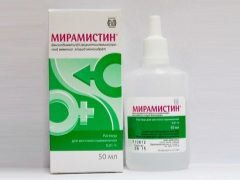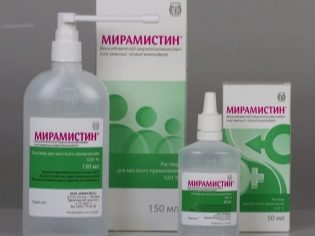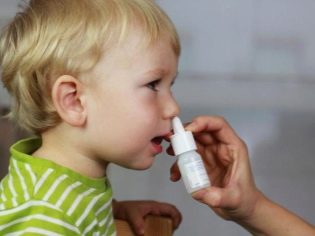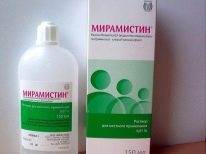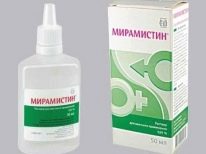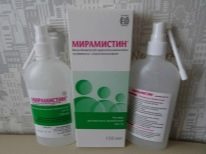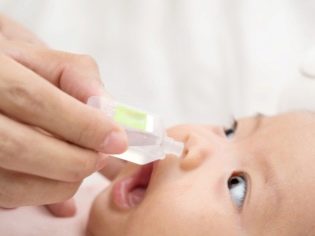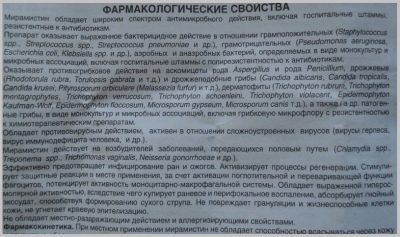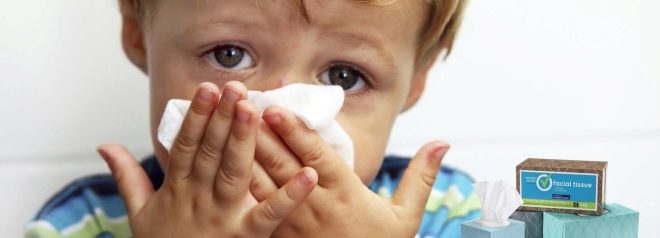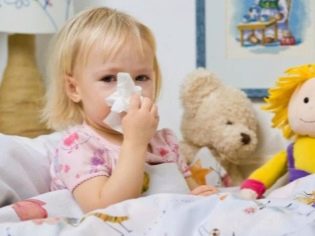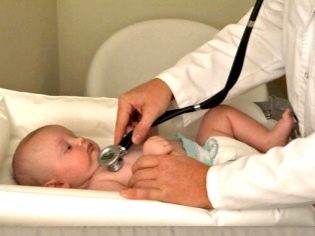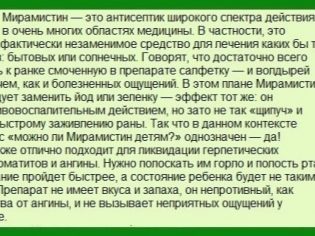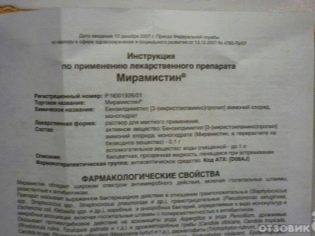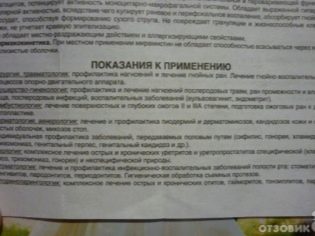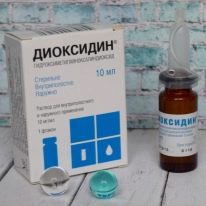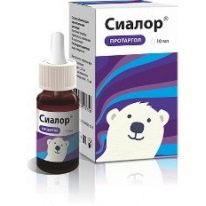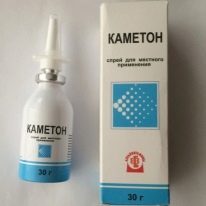The use of Miramistin in the common cold of a child
This antiseptic remedy of Russian production, as MiramistinIt is used in various diseases, for example, they are prescribed to splash into a sore throat with a sore throat, rinse your mouth during stomatitis, or wash out festering wounds. The drug is well proven in the treatment of rhinitis in adults. But is it possible to drip this remedy into the nose of children, how does it act on the child’s body and in what dosage is it used?
Release form
Miramistin is produced only in liquid form. This solution does not have any flavor or smell. It is completely transparent, but with shaking it foams actively. The drug is available in several packaging options, which differ in volume. On sale it is possible to meet small bottles with a capacity from 50 to 500 ml.
In addition to volume, they differ in nozzles. - some bottles are equipped with spraying devices, and others - with special nozzles for the treatment of urological or gynecological diseases. For the treatment of rhinitis, Miramistin is commonly used in plastic bottles of 50 ml each, to which both the urological nozzle and the spray bottle are attached. Also, the drug can be dripped into the nose, packaged in flat or round bottles of 150 ml.
This package has a nebulizer, thanks to which the medicament can be squeezed into the throat, but it can be easily removed.
Composition
The main component of the solution is the substance, which has the same name - Miramistin. In 1 liter of the drug it is contained in an amount of 0.1 grams, that is, a solution of 0.01%. In addition to miramistina, it contains only one additional ingredient - purified water. There are no other chemical compounds in the preparation.
How old is allowed?
The instruction to the solution includes information that its use is possible from the age of 3, but doctors refer Miramistin to safe local remedies, therefore they are prescribed it at an earlier age (sometimes even to an infant). However, it is not recommended to bury the nose for a child under three years old, or a 3-year-old toddler or older without consulting the doctor.
Only a doctor can determine whether the baby needs an antiseptic or requires the use of other medicines.
How does it work?
After contact with the mucous membrane of the nasopharynx, Miramistin affects mainly the place. Such a solution has a bactericidal effect against a sufficiently large number of harmful microorganisms, both aerobic and anaerobic. Among the sensitive to the drug bacteria can be called E. coli, gonococcus, Klebsiella, Pseudomonas bacillus, pneumococcus, staphylococcus and other microbes.
Miramistin is capable of destroying both one type of microorganisms and several pathogenic bacteria at once, from which the association was formed. The drug effectively acts on those strains that have become resistant to the most commonly prescribed antibiotics (they are called hospital). The difference of Miramistin from antibacterial agents is its ability to destroy some types of viruses, for example, herpes.
In addition, the solution has antifungal effect, so its use helps get rid of Candida and some other fungi.
Why choose to treat a cold?
The instillation of Miramistin in rhinitis is due to such features of the drug:
- The solution has a very wide range of effects on many pathogens.
- Treatment with Miramistin makes pathogens more susceptible to the action of antibiotics.
- The drug effectively helps to get rid not only of bacteria, but also of many viruses and fungi.
- The medicine also has an anti-inflammatory effect.
- The use of the solution activates local factors of immunity.
- The medicine has no irritating effect on the nasal mucosa.
- The drug does not harm the viable cells that are not affected by the infectious process.
- Treatment with a solution stimulates reparative processes.
- Miramistin is freely available in most pharmacies as a non-prescription drug.
Indications
Miramistin used for such diseases of the nasopharynx:
- SARS. If the nasal mucosa is inflamed during such an infection, the solution helps to eliminate viruses, reduce the activity of inflammation and prevent complications (for example, otitis).
- Bacterial rhinitis. With such a runny nose caused by harmful microbes, Miramistin will directly affect the cause, which will speed recovery.
- Sinusitis In this disease, which is usually provoked by bacteria, Miramistin is often used in combination with antibiotics.
- Adenoiditis The use of Miramistin in adenoids helps to reduce the inflammatory process and prevent complications.
In addition, the drug is in demand for pharyngitis, flu, sore throat and laryngitis. It is also actively used by dentists, surgeons, traumatologists and doctors of other specialties, prescribing for the treatment of stomatitis, burns, purulent wounds, diaper rash, thrush, urethritis and other problems.
Contraindications
The solution should not be used in children who have found intolerance to miramistin. There are no other contraindications for treatment with the drug, because the second ingredient is only water, and the medicament does not enter the bloodstream, so it cannot harm the internal organs.
Side effect
In some young patients after instillation of Miramistin, a short-term burning sensation occurs, which disappears after 10–20 seconds. With this side effect, you do not need to cancel the medication. But in a situation when, after treatment, allergy symptoms appeared (rash, redness, itching and others), they do not use Miramistin and go to the doctor to eliminate the allergic reaction and to select another medicine for rhinitis.
Instructions for use
The most common single dose of Miramistin for a cold is one drop of solution in each nostril. Less commonly, the doctor prescribes two drops in each in the nasal passages. The frequency of use should determine the pediatrician or ENT. Sometimes the patient has to bury the solution up to 8 times a day.
The duration of treatment of the nasopharynx with a cold is often 7 days. In some cases, the doctor recommends that you drip the medicine for 10 days or longer.
Price and storage conditions
On average, for a 50 ml bottle you need to pay about 200-220 rubles, and a bottle of 150 ml costs about 350 rubles. The shelf life of the solution - 3 years. While it has not expired, the medication should be kept at home at room temperature, picking up a place hidden from the kids.
Reviews
There are many positive reviews about the treatment of Miramistin in the common cold in children, in which parents note the high effectiveness of the antiseptic. The drug is praised for the possibility of treating even small children and the absence of unpleasant taste. Moms confirm that treatment is generally well tolerated, and an allergic reaction to the solution occurs in isolated cases.
In the negative reviews, which are sometimes found, you can read about the lack of therapeutic effect (this is possible with a neglected disease) and a high price.
Analogs
The following antiseptics can be used as a replacement for Miramistin in the treatment of rhinitis:
- Kameton. This medicine, based on menthol, eucalyptus oil, chlorobutanol and camphor, destroys harmful bacteria, reduces inflammation and nasal congestion. Aerosol is prescribed from 5 years, and spray - from 7 years of age.
- Protargol. These drops act due to the silver proteinate, destroying the pathogens. The drug is used from birth, because it has only local effects.
- Dioxidine. Such a solution with antimicrobial activity can be dripped into the nose only after prescription. It is often prescribed for prolonged rhinitis and is included in the "complex" drops, combining with other medicines.
In addition, in the treatment of rhinitis instead of Miramistin or together with it can be used drugs of sea water, oil drops, immunomodulating drugs in the nose, antibacterial drops, vasoconstrictor drugs and homeopathic remedies. All of them act on the children's body in different ways, so it is undesirable to drip any of the drugs of such groups without consulting the doctor.
Everything about this drug and its use, not only in children, tells the dermatovenerologist in our next video.
